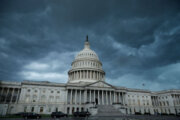With more than $300,000 in student debt from both college and medical school, anesthesiologist Dr. Jesse Kiefer is banking on the federal Public Service Loan Forgiveness program to discharge his debt after 10 years of payments.
Kiefer is less than a quarter of the way through the process, which involves paying more than $3,000 a month in loans through the federal income-based-repayment program, and is relying on the program for future financial security.
“From my research inquiries with financial planners, it seems as though those already submitted and enrolled in PSLF will continue,” says Kiefer, who works at the Hospital of the University of Pennsylvania.
[Discover eight facts about direct student loan consolidation.]
Since 2007, more than half a million borrowers like Kiefer have signed up for the federal student loan debt forgiveness program, which offers the benefit after 10 years of full-time work in public service. To enroll in the program, borrowers need to submit an employment certification form that they work for the government — state, local or federal — or for a 501(c)(3) nonprofit. A physician or a nurse working at a nonprofit hospital, for example, qualifies.
Many of those enrolled in the program hold a graduate or professional degree, a 2016 Brookings report found. According to the report’s findings, nearly 30 percent of borrowers enrolled in the PSLF program hold more than $100,000 in federal student loans. The report cites that this is in line with paying for graduate degrees, since federal loans for undergraduates have a general borrowing maximum of $31,000.
As the program enters its 10th year, PSLF faces uncertainty. While it may still be around for older borrowers, policy analysts say the program is unlikely to continue in its current state for new borrowers.
In fact, one of the spending cuts proposed in President Trump’s 2018 fiscal budget recommends eliminating PSLF for new borrowers after July 2018.
“The long-term security of the program is presently in jeopardy because there are those who are against it in Washington,” says Heather Jarvis, a student loan attorney. She adds that most policy analysts agree that even lawmakers who oppose student loan forgiveness won’t change the rules midstream for those who have been counting on the program.
[Check out careers that offer student loan forgiveness.]
Critics of PSLF say it has only survived for 10 years because, during that time frame, no one has received any forgiveness. Given that the program went into effect in 2007, this October is the earliest an eligible borrower could receive loan forgiveness.
“The reason why Congress enacted it and that it survived 10 years is that the assumption has always been that very few people would use it and the very few people would qualify,” says Jason Delisle, a resident fellow in education at the American Enterprise Institute, a conservative think tank in Washington, D.C.
Under the statutes for PSLF, Delisle estimates that more than 25 percent of the U.S. workforce meet the definition for public service. “It’s only a matter of time before people figure out how beneficial it is, which ironically will actually tank the program,” he says.
The number for borrowers enrolled in PSLF grew from 25,683 in 2012 to 669,426 in 2017, according to the Department of Education’s quarterly reports on PSLF employment certification forms.
The Congressional Budget Office estimated this year that the PSLF program will still cost nearly $24 billion for the next 10 years. That number doesn’t include future borrowers, since it’s based on the CBO scoring a proposal to eliminate PSLF. Analysts say the CBO keeps changing its outlook on the program because enrollment in PSLF keeps growing.
But Jarvis says, “I would be surprised if the CBO estimates prove to be correct.” While first borrowers theoretically will qualify for forgiveness this October, she says, there aren’t enough data points.
“In theory, while there are a lot of jobs that qualify as public service, that doesn’t mean there will be too many borrowers that qualify , because a person has to be committed to a career in public service,” she says.
[Learn to prepare wisely for Public Service Loan Forgiveness.]
Student loan experts also say there are many complexities with the program, which will hinder or delay borrowers enrolled in the program from receiving forgiveness. For example, a borrower may think he or she qualifies but may have the wrong type of loans for the program. Only a direct loan is eligible.
“The system if fraught with traps for the unwary,” says Jarvis, who says borrowers may also encounter issues with how many payments are considered on time or qualifying. Under the current rules, borrowers must make 120 on-time payments, although the remunerations don’t need to be consecutive.
“You’ll see borrowers make advance payments accidentally, thinking they are on track with a couple of payments at once , but they only get credit for one of them because of the convoluted rules,” she says.
While there isn’t a clear picture yet on PSLF’s performance, the program isn’t likely to be eliminated entirely. In fact, Michael Lux, a public attorney and founder of the blog The Student Loan Sherpa, says that would be a breach of contract for those who signed a promissory note for the program. That’s why Lux says proposals to eliminate PSLF have only been for future borrowers .
But his advice to new borrowers is to not to rely on the program existing in its current state. “I certainly wouldn’t bet my future on the program lasting indefinitely. I’d suggest to borrowers: Be careful about the total amount of debt they borrow and assume that PSLF will not be around.”
Trying to fund your education? Get tips and more in the U.S. News Paying for College center.
More from U.S. News
Why Few Borrowers Have Pursued PSLF
Ensure Eligibility for Public Service Loan Forgiveness
How Taxpayers Foot the Tuition Bill for Thousands of Grad Students
The Fate of Public Service Loan Forgiveness originally appeared on usnews.com







